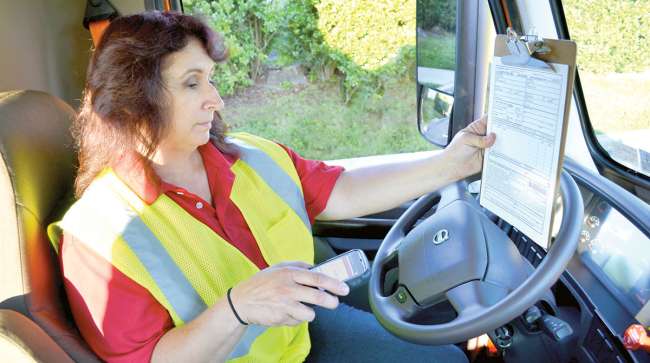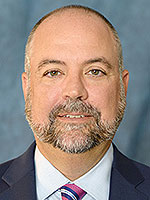Senior Reporter
Advisory Panel Urges Federal Action on Driver Shortage

[Stay on top of transportation news: Get TTNews in your inbox.]
A Department of Commerce advisory group is urging federal officials to lead a widespread effort to address the nationwide shortage of truck drivers, which the panel said has “likely reached an all-time high.”
“The vital common link for domestic operations and distribution among our air, sea, and land ports is effective truck transportation,” International Trade Administration’s Advisory Committee on Supply Chain Competitiveness said in a draft letter addressed to Commerce Secretary Gina Raimondo. ITA is part of the Commerce Department.
The 45-member panel is endorsing efforts to allow individuals younger than 21 to drive trucks in interstate commerce, currently prohibited by federal law.

Costello
“The department should work with DOT to remove obstacles to domestic goods movement, including but not limited to enabling under-21 commercial driver license (CDL) drivers to handle interstate commerce; addressing driver retention, training and workplace concerns within the industry; and enhancing “last-mile” connectivity options that connect workers with new workplace locations,” the letter said.
American Trucking Associations has estimated the industry is short at least 60,000 drivers. ATA Chief Economist Bob Costello, a member of the ITA panel, cautioned that number could grow in the coming months as more drivers retire and freight volumes increase.
Costello touted the group’s collaborative effort to address the driver shortage.
“The fact that such a diverse group of trucking industry practitioners agrees is very powerful,” he told Transport Topics. “It’s such a broad group of supply chain professionals, and we know we need to attract more people to this industry and make it better for those now in the profession.”
Infrastructure legislation that recently advanced in the U.S. Senate included language to permit younger drivers to operate Class 8 trucks interstate after completing an extensive training program.

Strauss-Wieder
“There are a lot of opportunities for drivers, said Anne Strauss-Wieder, director of freight planning for the North New Jersey Transportation Planning Authority and the chair of a subcommittee on the ITA panel that’s focused on workforce development. “Let’s say you’re a responsible 18-year-old in high school who is interested in trucking, and now you have to wait until you’re 21. That’s very hard. There is no ladder, or career step involved now.”
The committee also urged federal lawmakers to extend outreach to broader demographic pools of candidates, and to work toward improving working conditions in the industry.

Bingham
“The committee is trying to find ways to expand logically the safe, qualified driver workforce in ways that expand it to people who may have been shut out of the truck driver work pool,” said IHS Markit Transportation Economist Paul Bingham, who also is a panel member. “There is an acknowledgment on the committee that the government can do more, and it’s not just the federal government. In many cases, the problems are with state and local governments, but the federal government has the influence.”
The Senate bill, for example, establishes a new DOT panel that would aim to recruit more women to trucking.
The committee also seeks improvement in drivers’ day-to-day experiences by addressing ongoing truck parking shortages and safety.
“We also want to talk about driver retention and the driver experience,” Strauss-Wieder said. “It’s parking for staging, for appointment windows, emergency truck parking, trying to find out where drivers have to go if they have to get off the road.”
Last week, I toured K.L. Breedon & Sons, a trucking company located in DFW. We discussed issues facing their industry such as driver shortages and the web of regulations that render hiring nearly impossible. KLB was also kind enough to let me test-run one of their trucks. pic.twitter.com/WEuROG7YsP — Congresswoman Beth Van Duyne (@RepBethVanDuyne) August 11, 2021
The committee in the letter also called for improvements at the nation’s ports, including reduced wait times and streamlining cross-border movement for freight at the Canadian and Mexican borders.
“The department should work with DOT and partner agencies to consider how to improve U.S. transport infrastructure connections with Mexico and Canada, to help shorten supply chains and promote domestic and near-shoring production shifts,” the letter said. “The department … should consider how to improve the flow and speed of the export and import process and transport network access to U.S.-Canada-Mexico ports of entry.”
The letter added that efforts should ensure that “federal freight project investment is dedicated, sustainable and flexible, to ensure that large-scale, cross-regional freight infrastructure projects are completed, while paying specific attention to improving points at which various transport modes connect in order to avoid bottlenecks.”
Want more news? Listen to today's daily briefing below or go here for more info:

